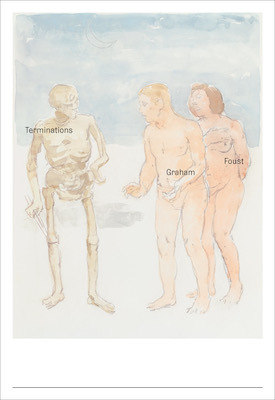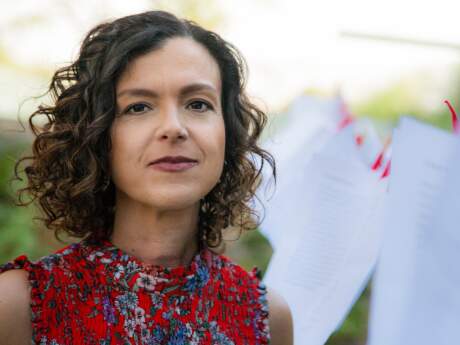In Their Own Words
Graham Foust on “Dialectical Image”

Dialectical Image
My housemates and I were tossing water at one another
from tall glass mugs, when what anyone would think would happen
happened—a Dorito-sized chunk of glass in Abby’s arm.
I was the boyfriend and the soberest (on both counts,
good for me!) and so I drove her to the clinic to get stitches.
It was a small-town clinic, the wait not long. They sewed her up,
and we went home and had some beers. She took her pill.
The local television station flew a blurry stars and stripes.
We got to bed at pretty much our normal time.
Near dawn, I heard a clicking that could only be called awful,
though it took me several minutes to arrive at that conclusion.
It was Abby’s pet rat, whose name I can’t recall,
who had chewed through the screen on the top of her cage
and climbed our loft to gnaw on Abby’s bloody stitches.
Overhearer, I went apeshit—there was nowhere else to go—
but before I did, I remembered that when I was eight years old,
my dad sold our rusted, flagless flagpole to our neighbor,
an old Republican man who’d once shared his dinner with me
while my hippie parents brained each other verbally.
Reprinted from Terminations (Flood, 2023) with the permission of the publisher. All rights reserved.
On "Dialectical Image"
I find | it hard | to write | this sort | of thing.
A lot of information that might help a reader to get with the poems in Terminations
can be Googled rather easily (there are plenty of images of Bernini’s Anima Dannata on the internet); several of the poems might seem to encourage an examination of my personal life, which I’m not going to expand on here (and which, to be frank, the reader should neither want nor expect me to expand on); and to identify language that’s been pushed, pulled, or dragged from other sources might be to suggest that those sources hold some key to understanding the poems, which is almost never the case (you do not, for instance, need to have seen Caddyshack or to have read Ted Berrigan to understand either “Genre Poem”).
But I’ll say a word about “Dialectical Image,” which takes its title from Walter Benjamin’s writing, and which contains quite a few iambic “runs,” although the poem as a whole is not in any fixed meter.
When I wrote this poem, I was obsessively reading James McMichael’s book-length poem Four Good Things, which makes brilliant use of iambic meter, and I also kept coming back to Benjamin’s “On the Concept of History,” in which Benjamin writes: “The past can be seized only as an image which flashes up at the instant when it can be recognized and is never seen again.”
Brought together, McMichael’s poem and Benjamin’s essay felt akin to the like poles of magnets repelling one another. There was something there, something I could feel but couldn’t quite see.
That feeling gave rise to my poem, a vantage point where I could also feel, as McMichael writes, a “balance”:
. . . alternately
there and not, the way it is when I’m up
walking somewhere and forget my weight—
around me, and in balance, in the world,
the things | I’ll ne- | ver think | about | or see.



